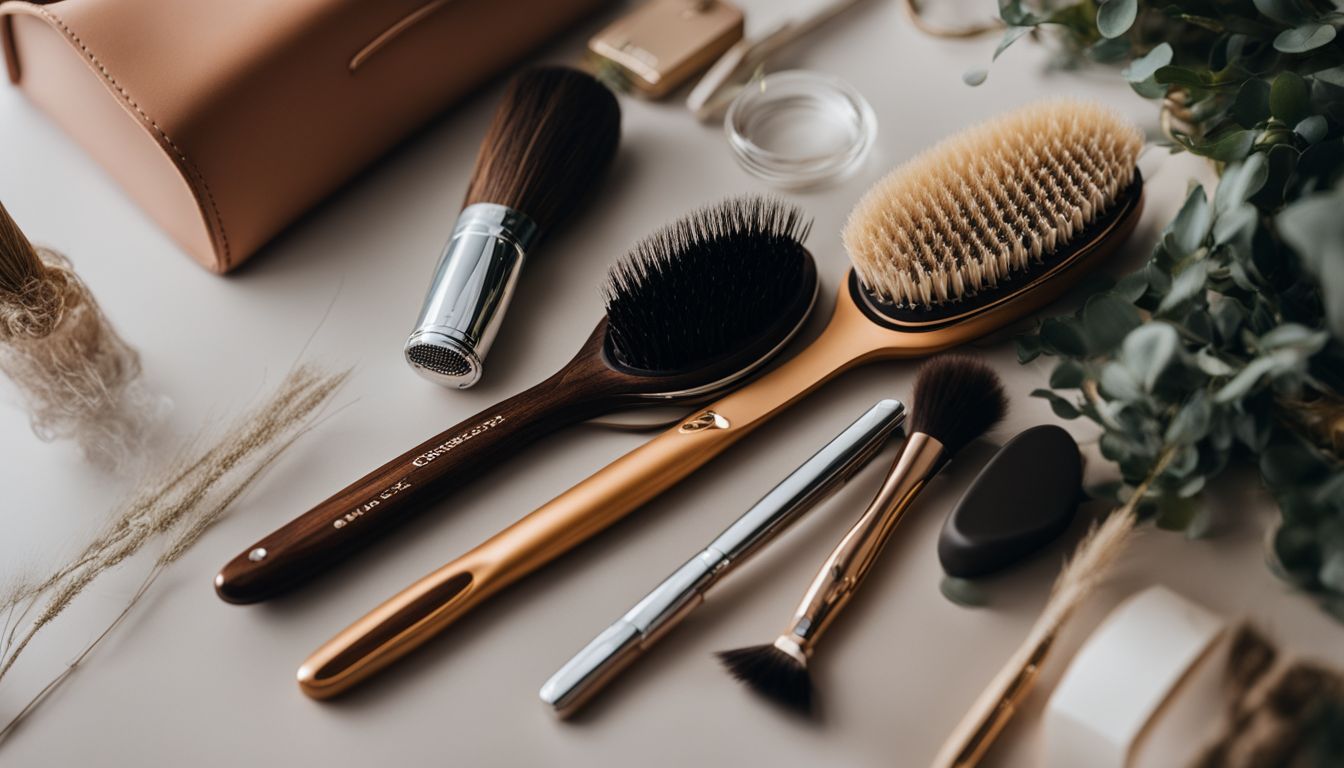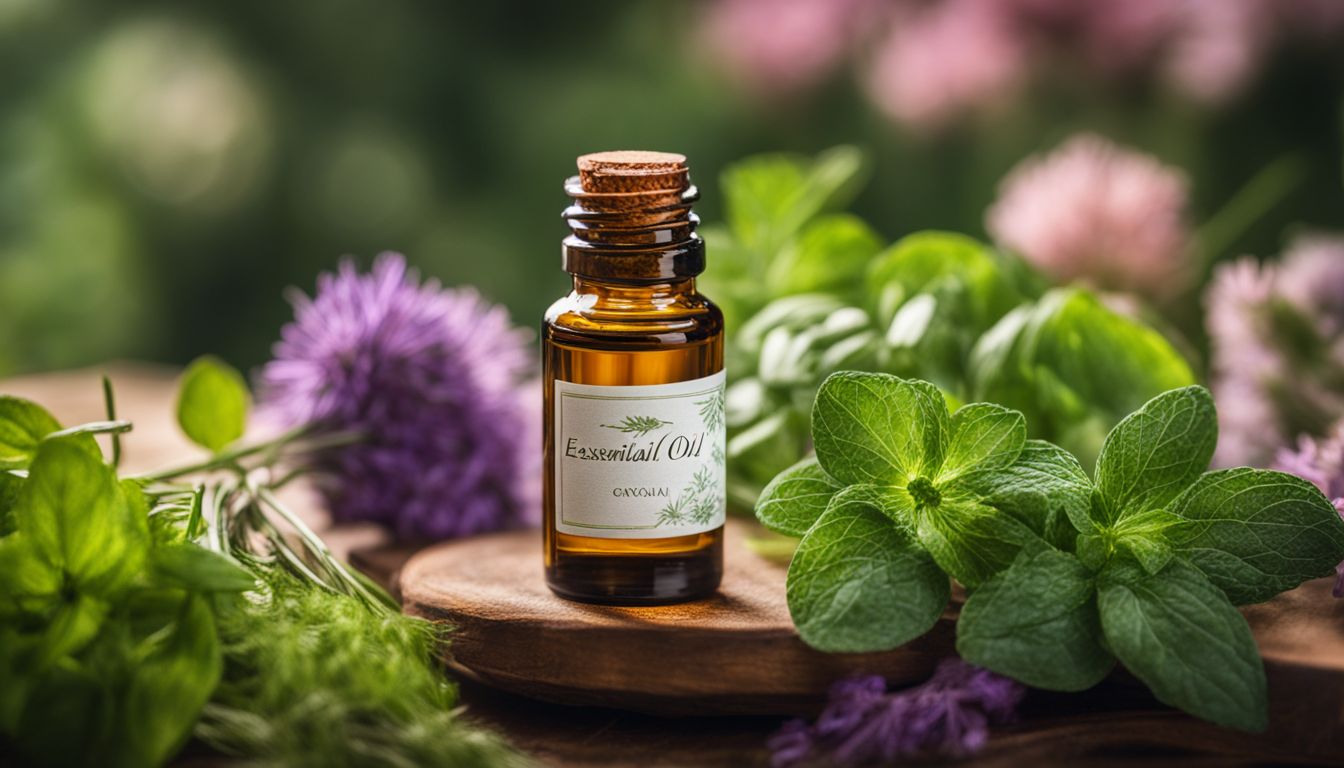
Losing hair can be frustrating and affect self-confidence. Every day, people search for effective ways to prevent hair from thinning or falling out. Our guide offers practical tips and treatments to help you keep your locks healthy and strong.
Keep reading – a solution might just be a scroll away!
Key Takeaways
- Use mild shampoos and soft brushes made from natural fibers to gently care for the hair and scalp, reducing breakage and promoting stronger hair growth.
- Avoid tight hairstyles like cornrows or ponytails that can pull on the scalp, leading to traction alopecia; opt for looser styles instead to prevent hair loss.
- Consider low – level light therapy as it may stimulate hair growth by increasing blood flow and cellular activity in the scalp.
- Incorporate essential oils such as rosemary or pumpkin seed oil into your routine through direct application or scalp massage to nourish the follicles and potentially reduce hair shedding.
- Quit smoking to improve blood circulation to the scalp, which is beneficial for preventing further thinning of the hair.
Understanding Hair Loss

Male-pattern and female-pattern baldness, alopecia areata, traction alopecia, and frontal fibrosing alopecia are some common causes of hair loss. Understanding the different types can help in preventing it effectively.
Male-pattern baldness
Male-pattern baldness strikes many men and often starts with a receding hairline, then progresses to thinning on the top and front of the scalp. This form of genetic baldness is linked to hormones and hereditary factors.
Unfortunately, it’s not something that can be prevented, as it’s written into one’s DNA.
Despite this inevitability for some, understanding the role of genetics in hair loss can help manage expectations and guide towards appropriate treatments or styles that work best for those affected.
For men grappling with male-pattern baldness, exploring options like medication or hair restoration might be worthwhile considerations to maintain confidence in their appearance.
Female-pattern baldness
Female-pattern baldness, also known as androgenetic alopecia, often leads to hair thinning across the scalp. It’s a common condition that can begin at any time after puberty, although it usually accelerates during menopause due to hormonal changes.
Unlike men who tend to lose hair in patches or have a receding hairline, women typically maintain their frontal hairline but suffer from diffused thinning of the hair behind it. If you notice your scalp showing through where your hair once was dense or if you’re seeing more strands on your brush than usual, it could be signs of female-pattern baldness.
Consult with a healthcare professional if you experience sudden or severe hair loss; early intervention may prevent further thinning. A doctor might suggest treatments such as minoxidil applications or possibly hormone replacement therapy depending on individual cases.
Moving forward, let’s explore how preventing certain actions might help curb the progression of this type of hair loss.
Patchy hair loss (alopecia areata)
Shifting focus from the gradual hair thinning that comes with female-pattern baldness, patchy hair loss strikes differently. Alopecia areata presents as sudden bald patches appearing on the scalp, creating a distinct and often stressful change in appearance.
This type of hair loss can strike anyone at any age but frequently surfaces in teenagers and young adults. Unlike pattern baldness which is more predictable, alopecia areata manifests quickly, leaving round, smooth spots completely devoid of hair.
The triggers for this startling form of hair shedding often lie in genetics or an autoimmune response where the body mistakenly attacks its own hair follicles. Stress can also exacerbate the condition, leading to more pronounced hair loss.
Men and women grappling with this challenge might explore treatments ranging from medical creams to injections that encourage regrowth within the affected areas. While there’s no surefire way to prevent alopecia areata due to its complex nature involving both lifestyle factors and genetic predisposition, managing stress levels and maintaining overall health could reduce potential triggers.
Traction alopecia
Traction alopecia strikes when you style your hair in ways that pull it too tight, be it through braids, ponytails, or buns. This pulling can lead to damaged hair follicles and eventual hair loss on the scalp if done repeatedly over time.
Even accessories like barrettes and rubber bands add strain that can worsen the situation. To keep your locks safe, choose looser hairstyles that give your strands a break from the tension.
Additionally, intense treatments such as hot oil applications and perms may compound the risk of developing traction alopecia. By steering clear of harsh chemicals and high heat styling tools, you protect your hair’s integrity.
Making simple changes in how you treat your hair could prevent permanent damage. Moving forward into prevention strategies is crucial for maintaining healthy growth and avoiding further stress to your tresses.
Frontal fibrosing alopecia
Frontal fibrosing alopecia mainly impacts postmenopausal women, leading to the recession of the hairline and loss of eyebrows. Seeking advice from a board-certified dermatologist at the first signs of increased hair shedding is crucial for creating a personalized treatment plan.
This information stresses how essential it is to be proactive when dealing with frontal fibrosing alopecia.
Prevention of Hair Loss

Preventing hair loss can be achieved by avoiding hairstyles that pull on the hair, using mild shampoo suited for your hair, and trying low-level light therapy. These practices can help maintain healthy hair growth and reduce the risk of balding.
Avoiding hairstyles that pull on the hair
Traction alopecia, a type of hair loss caused by tight hairstyles like pigtails or cornrows, can be prevented by being mindful of the tension on the hair. Hairstyles using rubber bands, barrettes, and braids should be avoided to limit stress on the hair and prevent potential hair loss.
Gentle handling of the hair and avoiding harsh treatments are essential steps in maintaining healthy hair growth.
Avoiding hairstyles that pull on the hair is crucial for preventing traction alopecia. By limiting tension on the scalp from styles like pigtails or cornrows, individuals can reduce their risk of experiencing this type of hair loss, promoting healthier locks overall.
Avoiding high-heat hair styling tools
High-heat hair styling tools, such as curling irons and straighteners, can lead to hair loss if used excessively. These tools can damage the hair shaft and follicles, resulting in brittle and weak strands that are prone to breakage.
It’s important to minimize the use of hot styling tools and opt for heat protectant products when they are necessary. By reducing exposure to high temperatures, you can help prevent potential damage and preserve the health of your hair.
To further protect your hair from heat-related damage, consider exploring alternative styling methods or embrace natural textures. It’s essential to prioritize the overall health of your hair rather than relying solely on hot tools for styling purposes.
Not chemically treating or bleaching hair
To further prevent hair loss, it’s essential to avoid chemically treating or bleaching the hair. This is crucial in order to minimize damage to the hair follicles, which can lead to breakage and thinning of the hair.
Chemical treatments and harsh bleaching agents can weaken the hair shaft and cause stress on the scalp, potentially contributing to increased shedding. By opting for natural and gentle approaches to color and style your hair, you can protect its integrity and reduce the risk of excessive hair loss.
For overall healthy-looking locks that are less prone to falling out, adopting a more natural approach when caring for your strands is key. Taking steps such as avoiding chemical treatments or bleaching helps maintain strong, resilient tresses that are less likely to experience breakage or fallout over time.
Using mild shampoo suited for your hair
Using a mild shampoo that suits your hair type can be an effective way to prevent hair loss. Mild shampoos are gentle on the scalp and hair, reducing the risk of damage and breakage.
By choosing a mild shampoo tailored to your specific needs, you can ensure that your hair remains healthy and strong, ultimately helping to minimize the likelihood of excessive hair loss.
Incorporating a mild shampoo into your hair care routine is one simple step towards preventing hair loss. With its gentle cleansing properties, it can help maintain the health of both your scalp and strands, contributing to overall stronger and more resilient hair.
Using a soft brush made from natural fibers
To further minimize hair breakage and scalp damage, incorporating a soft brush made from natural fibers into your hair care routine can improve overall hair health. This gentle tool helps distribute natural oils, reducing the risk of hair breakage and split ends.
Additionally, a soft brush made from natural fibers is recommended to minimize friction while detangling, promoting healthier and stronger hair over time.
Trying low-level light therapy
Low-level light therapy, also known as red light therapy, uses low-grade lasers to stimulate cellular growth in the scalp. This treatment option can help prevent hair loss and promote stronger, thicker, and faster hair growth.
It is an effective method that emphasizes early intervention and proactive measures for preventing hair loss.
Using low-level light therapy activates the cells in the hair follicles and stimulates blood flow to encourage new hair growth. The article highlights the importance of considering this treatment to maintain healthy hair and prevent further thinning or balding.
Home Remedies for Hair Loss

Essential oils and scalp massage are popular home remedies for hair loss. These natural remedies can help improve circulation to the scalp and promote hair growth.
Essential oils
The use of essential oils, such as chamomile oil, thyme oil, and tea tree oil, has been found to be effective in reducing hair loss and improving conditions like alopecia areata, androgenetic alopecia, and psoriatic alopecia.
Additionally, pumpkin seed oil and rosemary oil can be directly applied to the scalp to prevent hair loss. These oils work by nourishing the scalp and promoting healthy hair growth.
Incorporating essential oils into a regular hair care routine may help improve overall scalp health while reducing the risk of excessive hair shedding.
Furthermore, the application of essential oils through scalp massage can stimulate blood flow to the follicles and increase nutrient delivery to the hair roots. This promotes healthier hair growth and may contribute to preventing further thinning or loss.
Scalp massage
Scalp massage can enhance blood flow to the hair follicles, promoting hair growth. A 2016 study found that just four minutes of daily scalp massage over 24 weeks led to positive results in increasing hair thickness.
This simple and relaxing technique may contribute to preventing or stopping hair loss, making it an easy addition to anyone’s daily routine.
Incorporating scalp massage into your self-care routine could potentially be a beneficial step towards maintaining healthy and fuller-looking hair.
Quitting smoking
Quitting smoking can help reduce the risk of hair loss. Smoking is linked to damage to the hair follicles and reduced blood flow, which can contribute to hair thinning and balding.
Making the decision to quit smoking may not only benefit overall health but also improve hair quality and promote healthy growth. Researchers have found a strong association between quitting smoking and a decreased risk of experiencing hair loss due to the positive impact on blood flow and follicle health.
Moving forward, let’s explore essential oils as home remedies for preventing hair loss.
FAQs About Hair Loss

Can hair loss really be prevented? Find out the answer to this and other common questions about hair loss in our blog. Keep reading to learn more!
Can hair loss really be prevented?
Preventing hair loss is possible through various methods like using gentle hair care practices and avoiding harsh treatments. Tips such as using a soft brush, mild shampoo, and being mindful of hairstyles can help prevent avoidable types of hair loss.
While genetic baldness may not be preventable, seeking medical advice for personalized guidance on preventing or slowing down other forms of hair loss is essential.
Understanding Hair Loss Prevention Methods:
It’s important to understand the significance of lifestyle changes in combating hair loss effectively. By adopting gentle hair care routines and avoiding harsh styling practices, individuals can significantly reduce the risk of preventable types of hair loss.
Seeking professional advice for personalized guidance is crucial to address specific concerns and embrace effective preventative measures.
How do I tell if I’m losing hair?
Look for gradual thinning or bald spots on the scalp, which could signal hair loss. If you notice circular or patchy bald spots, it might indicate a specific type of hair loss. Sudden loosening of hair or full-body hair loss are also signs to watch out for.
Pay attention to changes in your hair volume and texture as these can be early indicators of potential hair loss.
Now let’s move on to explore ways that could help prevent further hair loss and promote healthy regrowth.
Conclusion
Preventing hair loss involves taking proactive steps. These steps include avoiding hairstyles that strain the hair, using gentle hair care products, and trying home remedies such as scalp massages and essential oils.
Making dietary changes to ensure proper nutrition is also important in preventing hair loss. Seeking advice from a medical professional at the first signs of increased shedding is crucial for effective treatment and prevention.
FAQs
1. What are some common causes of hair loss?
Hair loss can happen due to medical conditions like androgenic alopecia, female pattern baldness, or autoimmune diseases. Stress, poor nutrition, genetics, and treatments for cancer like radiation therapy can also cause hair to fall out.
2. Can changing my diet help prevent hair loss?
Yes! Eating a healthy diet rich in antioxidants found in vegetables and nuts may support a healthy scalp and minimize inflammation that contributes to hair loss. A Mediterranean diet has been linked with lower risk of male pattern baldness.
3.Can certain medical treatments help restore lost hair?
Absolutely! Treatments such as platelet-rich plasma injections stimulate the scalp and could reverse hair thinning while medications or low-level laser therapy can promote regrowth in conditions like telogen effluvium or cicatricial alopecia.
4.What should I avoid to reduce my risk of losing more hair?
Keep away from harsh hairstyling techniques that pull on the follicles which can worsen conditions like trichotillomania, an impulsive hair-pulling disorder. Also avoid smoking because nicotine negatively affects blood circulation around the follicular units of your scalp.
5.Are there any supplements or vitamins that might stop my hair from falling out?
Biotin (Vitamin H) supplementation is often recommended for strengthening nails and reducing frizz in your locks. Other essential nutrients include vitamin D for promoting growth during the anagen phase of the hair cycle.
6.How does stress affect my chances of experiencing excessive shedding?
Being highly stressed activates a response that pushes more hairs into resting phase faster than usual – known as telogen effluvium—resulting in noticeable shedding once you comb through or wash it.
